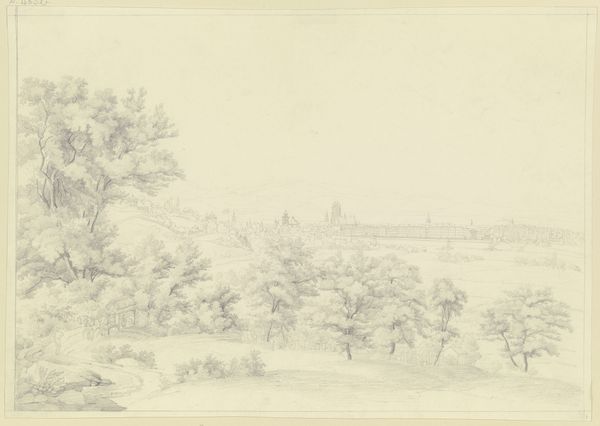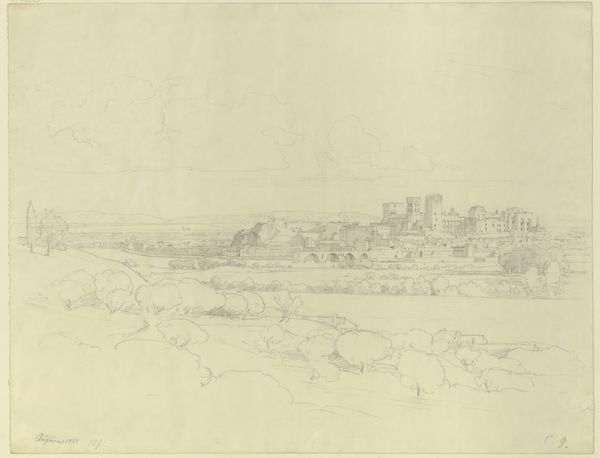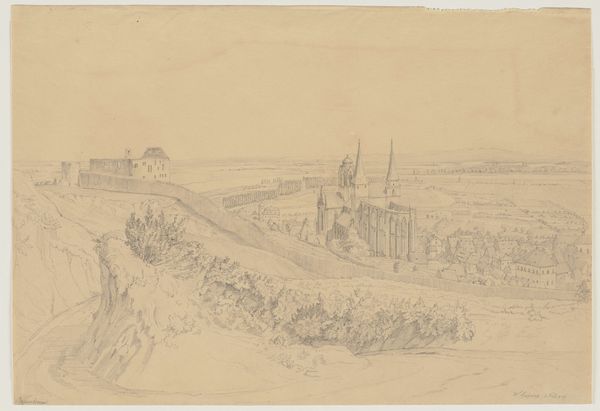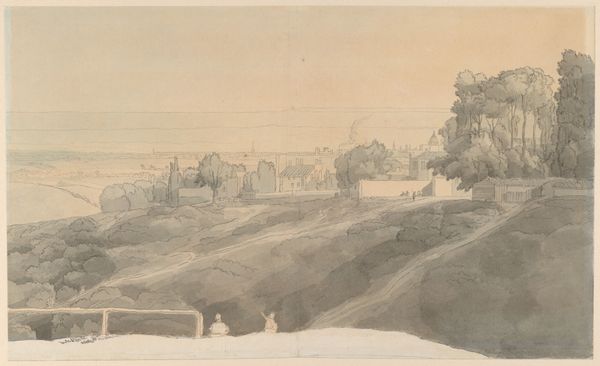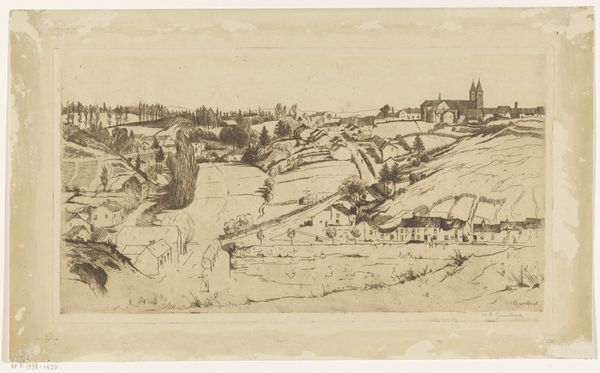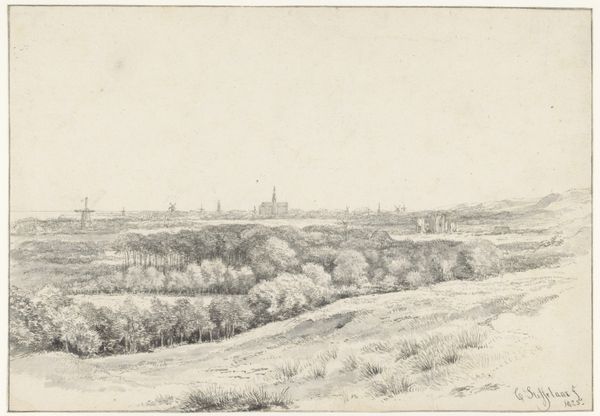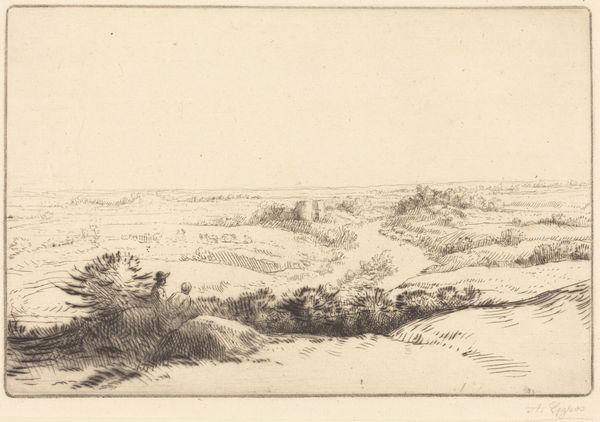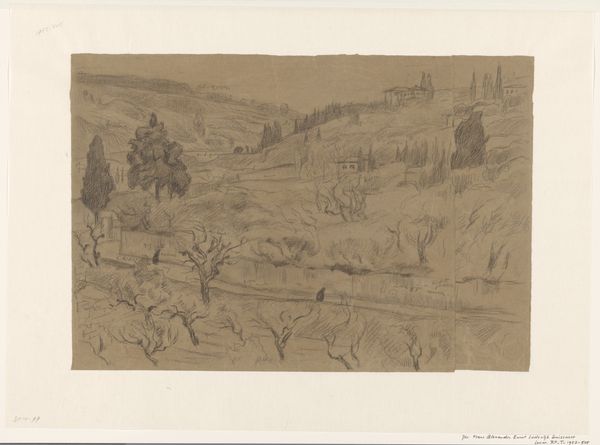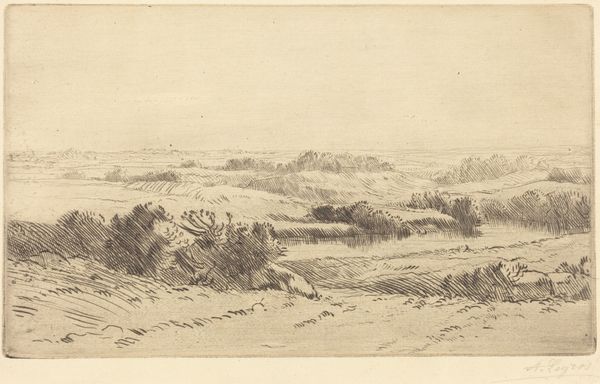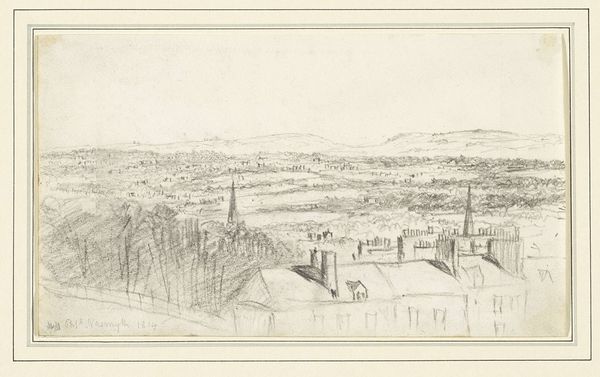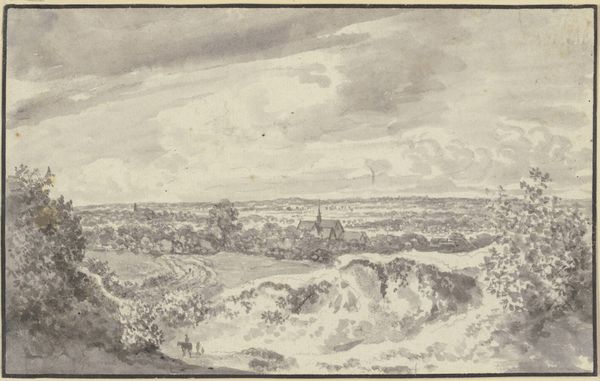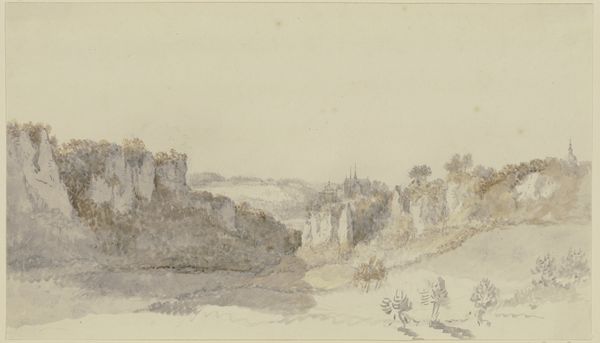
drawing, etching, paper, ink
#
drawing
#
16_19th-century
#
etching
#
landscape
#
etching
#
paper
#
ink
#
romanticism
#
cityscape
Copyright: Public Domain
Editor: Here we have "Florenz, Blick von S. Miniato auf die Stadt" – Florence, View from S. Miniato on the City – an 1825 ink and etching drawing on paper by Ernst Fries, currently held at the Städel Museum. Its sepia tones give it such a classic, almost timeless feel. How do you approach a piece like this from a formalist perspective? Curator: Focusing solely on the visual, we note first the distribution of tonal values, carefully modulating the light from foreground to background, a composition that directs the eye from the textured foreground toward the clear articulation of architectural forms in the distance. The layering of ink creates depth and recession. Fries demonstrates mastery in manipulating linear perspective. Note how individual architectural elements serve as signifiers of Florentine identity. Editor: I notice how the hazy atmosphere seems to flatten the space, almost like looking at a stage set. Is that intentional, a stylistic choice? Curator: Perhaps, or it could be an indexical quality to the artwork. Is it intentional to convey aerial perspective, given the constraint of medium, to capture an expansive vista? One could consider the relation of marks. Take a look at the strokes defining foliage versus that detailing building contours: are there differences in their application that serve the artwork's visual and semiotic program? How do those decisions impact its function as a historical record versus artistic expression? Editor: So, less about what Florence *means* historically and more about *how* Fries used line and tone to construct its image? Curator: Precisely. Formalism demands rigorous engagement with visual elements and how they cohere – or fail to cohere – as a total, meaningful entity. We must consider how the materiality affects its overall meaning, moving away from extra-artistic considerations. Editor: I see – that tight focus on technique and composition really opens up new avenues for interpreting art! Curator: Indeed. Formalist analysis can equip anyone with the visual acuity and theoretical basis needed to develop compelling interpretations from art.
Comments
No comments
Be the first to comment and join the conversation on the ultimate creative platform.
